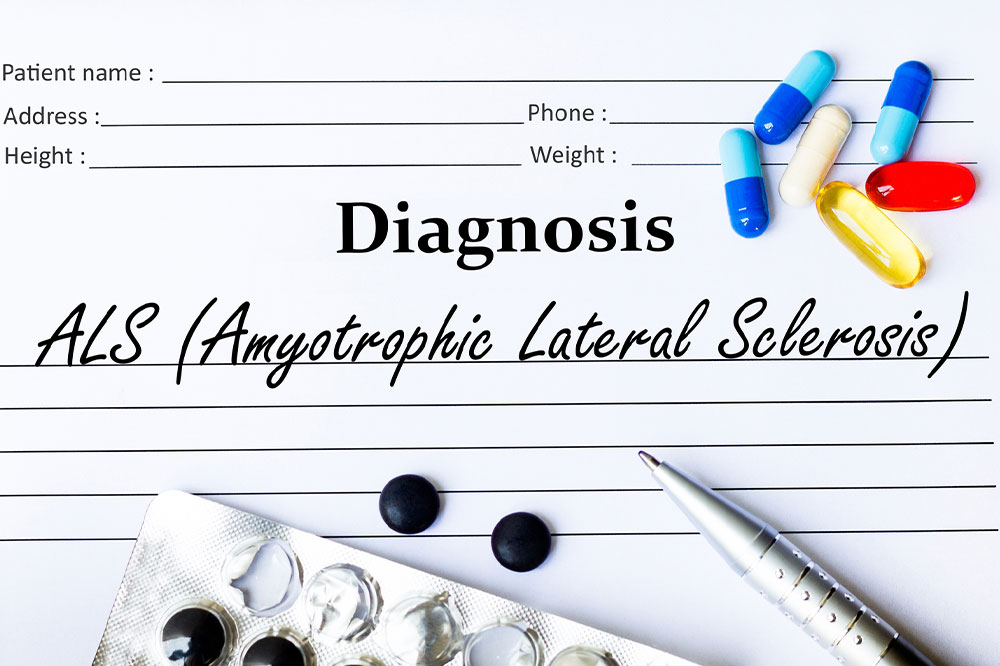
Amyotrophic lateral sclerosis – Symptoms, causes, and management
Amyotrophic lateral sclerosis (ALS) is a progressive nervous system disease that affects nerve cells in the brain and spinal cord. About 30,000 individuals in the country are affected by the condition, with 5,000 new cases diagnosed yearly. ALS occurs gradually but can get worse as it progresses. The nerve-damaging condition may eventually lead to health complications restricting one’s movement. The disease may also prevent individuals from indulging in daily routines.
Symptoms
The signs and symptoms of ALS differ from one person to the next. This also depends on the region of the affected neurons in the body. The condition usually begins in the hands, feet, and limbs and gradually progresses to other body regions. Moreover, the disease destroys nerve cells as it advances, and the symptoms get worse as the disease progresses. A few symptoms include:
- Muscle weakness and twitching
- Slurred speech
- Trouble engaging in daily activities
- Weakness in the feet, ankles, and legs
- Difficulty with walking
- Trouble swallowing
- Muscle cramps
- Twitching of the tongue
- An unusual burst of emotions, resulting in crying or laughing
- Inappropriate yawning
- Cognitive and behavioral changes
One may not feel pain in the early or advanced stages of ALS. However, this may differ from one individual to the next. It also does not affect bladder control or one’s senses.
Causes and risk factors
What we understand so far about the disease is that it affects voluntary muscle movements like walking and talking. But the precise cause of ALS is yet to be determined. Moreover, research indicates that certain risk factors may put one at greater risk of developing the condition.
Heredity
Studies show 5% to 10% of people with amyotrophic lateral sclerosis may have inherited it from their family members. In most cases, a child may have a 50-50 probability of developing the condition if their parents have familial amyotrophic lateral sclerosis (FALS), which is a type of ALS.
Age and sex
The risk of developing rises as a person grows older. The condition is commonly noticed in people between the ages of 40 and in their mid-60s. The condition is also more likely to develop in men as they are near the age of 65. However, this differentiating factor diminishes after the age of 70.
Genetics
Sometimes people with non-inherited ALS may develop the disease. In such cases, research shows that the genome of such individuals shares similarities with the genetic variations of people with familial ALS.
Environmental factors
Exposure to harmful chemicals at home or work may also lead to the development of ALS. Furthermore, someone who has served in the military is also at risk of developing the disease. The condition might be triggered following exposure to certain chemicals or metals, traumatic injuries, intense exertion, and viral infections.
Diagnosis
A diagnosis of ALS is difficult in the early stages because it shares similarities with other neurological diseases. Healthcare experts may conduct tests to rule out other conditions. A few diagnosis methods to identify ALS include:
- Electromyogram (EMG).
- Blood and urine tests
- Nerve conduction study
- MRI
- Muscle biopsy
- Spinal tap (lumbar puncture)
Treatment options
The treatments for ALS help slow its progression and make individuals more comfortable and independent. Patients with nervous system diseases may also require doctors to professionalize in several areas to manage care. They will also help the individuals pick the right treatments to benefit their quality of life. For example, a doctor might prescribe analgesics to relieve symptoms, including pain, fatigue, constipation, depression, and sleep problems.
Therapy options
A healthcare expert may also suggest a few therapeutic options to manage the disease. Some of them are:
Testing
Testing for breathing regularly is one therapy option, as ALS makes breathing difficult as it progresses. The specialist will recommend devices to help the individual breathe at night.
Exercise
A physical therapist may address walking, mobility, bracing, and equipment to help one function independently. The therapist may also ask the patient to indulge in low-impact exercises to maintain muscle strength, cardiovascular fitness, and range of motion.
Occupational therapy
Using adaptive equipment, an occupational therapy may help those with arm and hand restrictions to stay independent. For example, adapting may include modifying the home environment to better suit a patient’s needs.
Other techniques
Since ALS can impact one’s speaking ability, the therapist may suggest techniques to make the individual’s speech more understandable. This is possible with equipment like tablet computers with text-to-speech applications or computer-based equipment with synthesized speech.
Coping and support
Living with ALS can impact one’s physical and mental health. So learning about various methods can help the patient and their family members cope better with the development. Joining a support group is a great way for the affected individual and their family to learn more about the condition and ways to manage it. Considering ALS progresses, one should plan for future care to ease potential symptoms.




